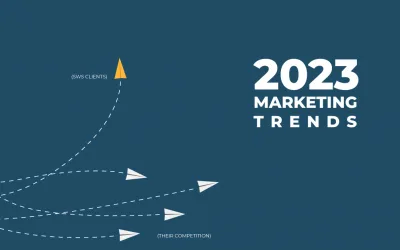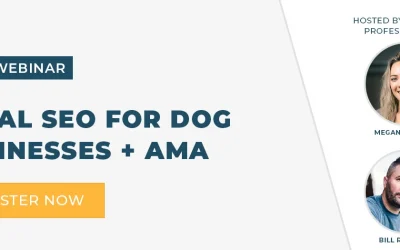No matter how incredible your website looks or how well the content is written, no one will see it if it hasn’t been properly optimized. Even a website that’s beautifully designed can be outperformed by a less-sophisticated landing page that’s been optimized by an SEO specialist.
SEO is the optimization of viewable content and technical elements on your website so that search engines can find your site more easily and deliver it to the target audience searching for your goods and services.
There’s a lot more to optimization than simply adding keywords to your site content. Professional SEO services require continuous maintenance in order to ensure the site remains up-to-date with SEO best practices. However, there are a few easy website optimizations that nearly anyone can employ without the help of a hired professional.
10 Quick Website Optimizations to Outrank the Competition
The best way to get your website in front of the right people at the right time is by optimizing its content. Simply by enhancing your site’s SEO, you can dramatically increase your monthly traffic, leading to increased conversions and sales. The following 10 tips will help you rise above the competition so you can take your rightful place on the first page of Google.
Keyword Research
While this isn’t something that technically appears “on-page,” keyword research is necessary for the overall success of your site. When researching keywords, it’s a good idea to use free Keyword Research tools such as Ubersuggest, Keywords Everywhere, or Answer the Public . These resources allow you to search for terms related to your products and services, and provides you with related suggestions that users are already searching when using the platform. Generally, it’s best to target low-volume, long-tail keywords (three or more keywords in a specific order) as they have a lower competition and higher conversion rate. However, sprinkling in a few high-volume keywords as well can help strengthen your page authority and allow you to reach more potential consumers.
Optimized URLs
On the back-end of your website when you initially build a page, you should have the option to change its URL. This URL is what directs users to a specific area of your website, and how it’s named and structured matters for the user experience, site rankings, and linking. The following illustrates the current best practices in 2020 for well-optimized URLs:
- Must be simple, relevant, compelling, and accurate
- Include target keywords
- Should be definitive and concise, allowing users and search engines to easily anticipate what’s held on the page
- Use hyphens to separate words — not underscores, spaces, or any other characters
- Use all lowercase letters
Title Tags & Meta Descriptions
Title tags are another method through which search engines can determine what’s on your page. These tags are used in three main areas: search engine results pages (SERPs), web browsers, and social networks. Generally, Google only displays the first 50 – 60 characters of a title tag, so it’s best to keep these titles within that character range as it will help users understand what they can expect.
Additionally, meta descriptions are essential for providing users and search engines clarity about what exists on a webpage. The meta description is the short blurb you see beneath the page title on an SERP. Google usually only displays the first 135 – 160 characters of a meta description, so the more succinct you can be with your page description, the better.
Keyword-rich Headlines
Headlines don’t always need to be the same as your title tag: In fact, SEO best practices dictate that they should be different from one another. All webpages should start with a well-optimized H1 headline. When crafting your headline, be sure it is succinct, compelling, and keyword-rich. Try to aim for a headline that uses your target keyword as one of the first three words as this will help the page rank higher. Additionally, try to keep headlines between 50 – 60 characters.
Page Structure
Following the H1 headline, you’ll need to organize the rest of the content that appears on your page to provide clarity and ease-of-use to your site visitors. Most people visiting your page aren’t interested in reading through blocks of content. They’re looking for specific answers to specific questions, and they need an easy way to find them. The easiest way to achieve this and encourage a better user experience is by organizing content through a clear structure of H2 and H3 headings. Generally, H2s are used to break up big ideas while H3s are used to further separate ideas within an H2 section.
Internal Linking
When writing the content for your page, you’ll want to highlight specific keywords and phrases and link them to pages on your site that have those same keywords and phrases in the page’s URL. Internal linking is incredibly important as it conveys to search engines that the content on your site can provide further value and resources to audiences searching for your keywords. Whenever you’re building new content on your website, try to think of ways in which you can relate to other content that already exists as this will strengthen your SEO ranking.
Images & Videos
All great web-based content has videos and imagery to add context and stimulate the user’s attention. However, uploading photos isn’t enough to successfully optimize your page. When saving the image to your computer, you must be sure to follow SEO best practices and name the file accordingly. Keep file names between four and eight words (all lowercase) and separate each word with a space — not a hyphen, underscore, or other character. Be sure to include keywords and phrases within your file name, and follow simple sentence structure. For example, if you’re a dentist uploading a picture of your office and you’re targeting the keyphrase “dentist in North Carolina,” you might name the image file “dentist office in north carolina.”
Callouts & Content Beacons
Similar to buttons, callouts and content beacons on your webpage help signify to users that there is other relevant content they may find useful on your site. Callouts are more customizable and offer developers the ability to add titles, colors, hyperlinks, and size adjustments. Due to their visual nature, they’re better able to attract users’ attention and encourage them to stay on your site longer, providing more opportunities for your business to convert and make a sale.
Schema Markup
Your website’s schema markup is what helps search engines return more relevant information to users. Instead of simply telling search engines what your website says, schema markup tells the search engine what that data actually means. It’s an excellent way to optimize specific content types, including articles, menu items, TV episodes and ratings, movie times, events, products, and more. According to recent studies, websites that use schema markup rank an average of four positions higher in SERPs than those that do not. Most commonly, web developers use rich snippets as a form of schema markup to help inform users about what can be found on their page.
External Linking
Linking to credible source materials and other websites is great for SEO as well because it signals to Google and other search engines that the two content sources are related. Just be sure that if you are linking externally, you set the hyperlink’s settings to open in a new page. This prevents your bounce rate from going up, allowing users to keep your website open while viewing the source content in another tab.
One More Quick SEO Tip
In addition to the 10 tips listed above, businesses can enhance their site rankings by conducting some simple SERP research. Using the keywords and phrases found in your initial research, perform a quick search across a few different search engines and see what comes up in the first page. Most users only refer to what’s listed on the first page of results to click through to a page during their search query. By conducting a quick SERP analysis of what competitors are putting in their title tags, headlines, meta descriptions, and URLs, you can better inform your own SEO strategy.
What to do When You Can’t Figure Out SEO
Before building a website, make sure you use this checklist to cover all your bases and ensure it’s well-optimized. SEO is a complex process that takes years of industry expertise to execute successfully. If you have trouble executing your SEO strategy, consider hiring a digital marketing agency to help you position well in search!




